Bukowskis presents Carl Larsson at Important Winter Sale
Bukowskis is proud to present several artworks by Carl Larsson on Important Winter Sale
Carl Larsson, ”Aftonrodnad”
”In the summertime, we were with my sister-in-law Stina living a healthy outdoors life by Äppelviken (outside of Varberg), where we rented a cottage from the widow of a stone-cutter, with a little garden protected from the wind by a stone wall. We bathed together and played as if we were children. Suzanne jumped on the never-ending stones like a goat. Little Ulf preferred lying by his mother’s breast.”.
Carl Larsson is here describing the idyllic existence he spent at Äppelviken, near Varberg, during a couple of summer months in the late 1880s. It was here that he is said to have painted Aftonrodnad, a painting whose quiet garden scene seems to mirror the artist’s sense of well-being in the countryside. In the painting, he depicts his wife Karin’s sister Stina standing in the lush garden looking with rosy cheeks towards the artist. At first, you only see two people in the painting, but if you look closely the foot of a third figure is visible in the bottom right hand corner of the image.
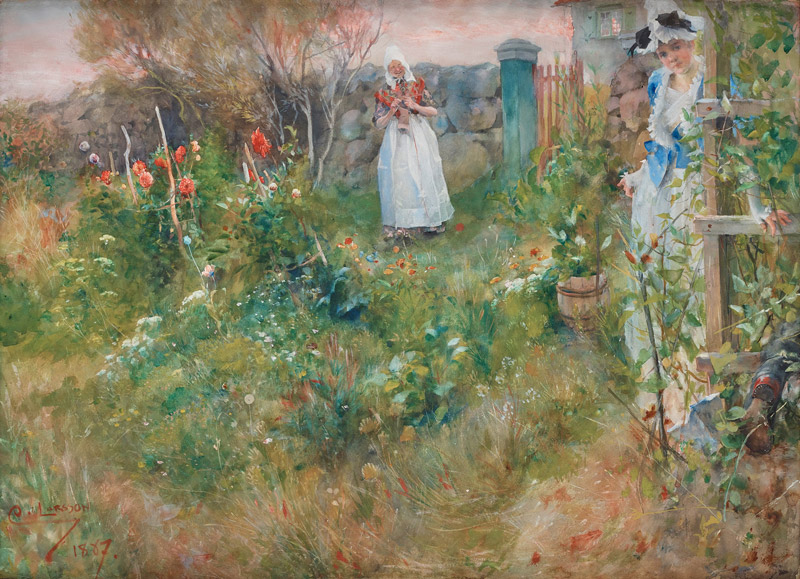
When not at Äppelviken, life was far from harmonious for the artist. In 1887 Larsson taught at Valand art school in Gothenburg, and among his students were Albert Engström and Carl Wilhelmson. As per usual, the students were not very well off, and Larsson helped out as much as he could – an impressive generosity given Larsson’s financial situation. The artist recalled his circumstances in his memoir Jag: “I was penniless: it was not the glory days I thought myself being so close to. My new and wealthy acquaintances in Gothenburg invited me to parties – the most extravagant kind, but any purchases or commissions were hard to come by”.
In other words, it wasn’t an easy life for the Larsson family at this time, far from the idyllic existence at Sundborn, which has later come to be so associated with Carl, Karin and their children. However, it was, fortunately, in no way a joyless life. The relatively recently newly-wed couple had by now begun to create a family, and each day they could rejoice in their first-born child. At Äppelviken, they were able to spend time together quietly, and in "Aftonrodnad", you get a real insight into the peace of mind that Larsson felt there.
To be sold at the Important Winter Sale.
Estimate 3 000 000 - 3 500 000 SEK.
Viewing: December 1–6th, Berzelii Park, Stockholm.
Open: Mon–Fri 11 AM–18 PM, Sat–Sun 11 AM–16 PM.
Auction: December 7–9th, Arsenalsgatan 2, Stockholm.
To the work
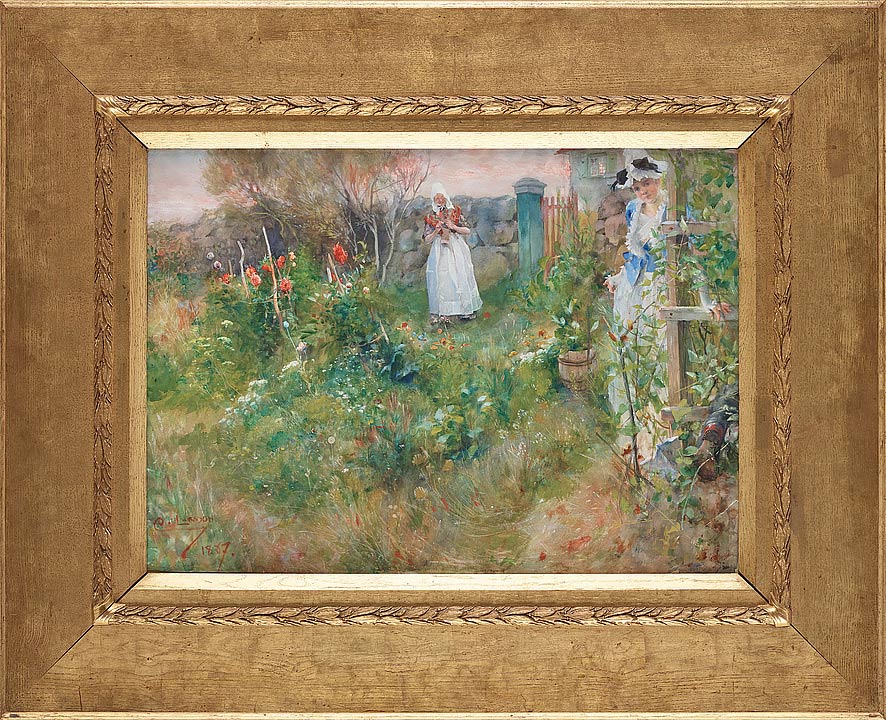
Carl Larsson, ”I lövsprickningen”
”For this ramshackle building, so terrible during the cold season, is an idyll during warmer times. Picture the garden with its apricot trees, vines, lilacs, all sorts of flowers and edible leaves, as well as a little elegant drinking corner where Scandinavian Gentlemen enjoy the most wonderful views across Paris whilst, unbothered, daring to spit on passers-by.”
This is how Carl Larsson described his studio garden in Montmartre, Paris, in a letter to August Strindberg dated 17th February 1881. The artist had been residing in the French capital for a few months, and now winter was beginning to pass into spring. With "I lövsprickningen", he captured this longed-for moment of spring’s return to his studio garden. In the foreground, we notice a chair, seemingly just abandoned. On the chair, a book is left open and next to it is a basket in which we glimpse a sunhat and freshly picked flowers. The impression is that of the imminent return of the person that has sat there to pick up the open parasol resting against the chair.
When looking at "I lövsprickningen", it is clear that Larsson mastered the new French realism very early in his career. From the 1870s, young artists had increasingly begun to locate their studies abroad to France, in contrast to their older colleagues whose training had mostly taken place in Germany. At the heart of the new style was painting in ‘plein air’, with the artists abandoning their workshops and beginning to paint outdoors. New products such as ready-mixed paint in tubes made it possible for the artists to leave their studios and move freely around the city and in nature with their tools.
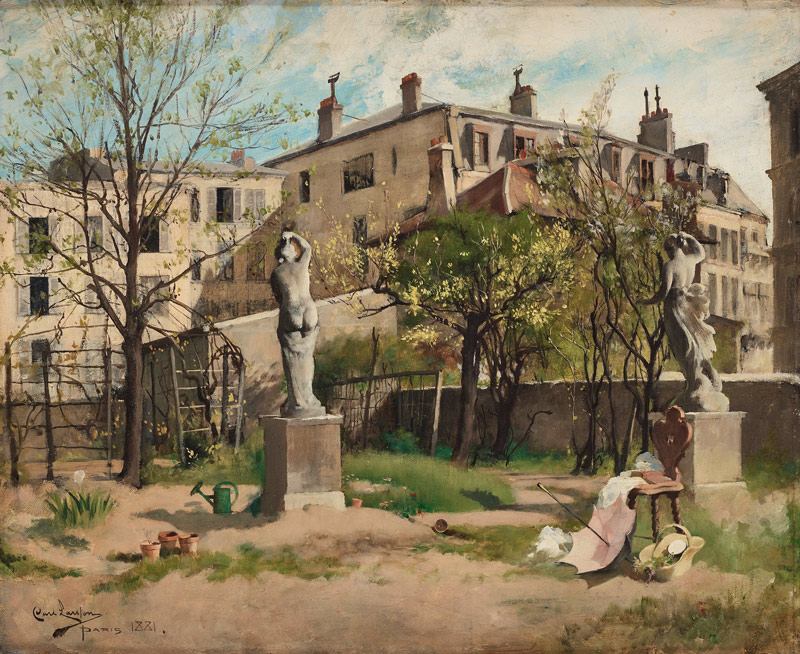
In "I lövsprickningen" Larsson employed a desaturated and cool colour palette in shades of brown, blue and green. This tonality distinguished a great part of the new French style that he was exploring. It can be found in the work of artists such as Jules Bastien-Lepage and Jean Charles Cazin, for example. At the same time Larsson contrasted this desaturated colour tone with details in stronger colours, such as the green shade of the trees and the small red flowers on the ground.
Larsson had arrived in France on the 25th of November 1880, and six days later, he wrote the following words to his parents:
”Dear parents! I have arrived! My soul is rejoicing, we shall see for how long – at least until the money finishes. It is ghastly difficult to come by studios here, but I have succeeded in finding one for 800 francs a year. It is really just a glazed veranda with three rooms and a garden. I suspect it shall be terribly cold, but I shall get myself a good stove.”
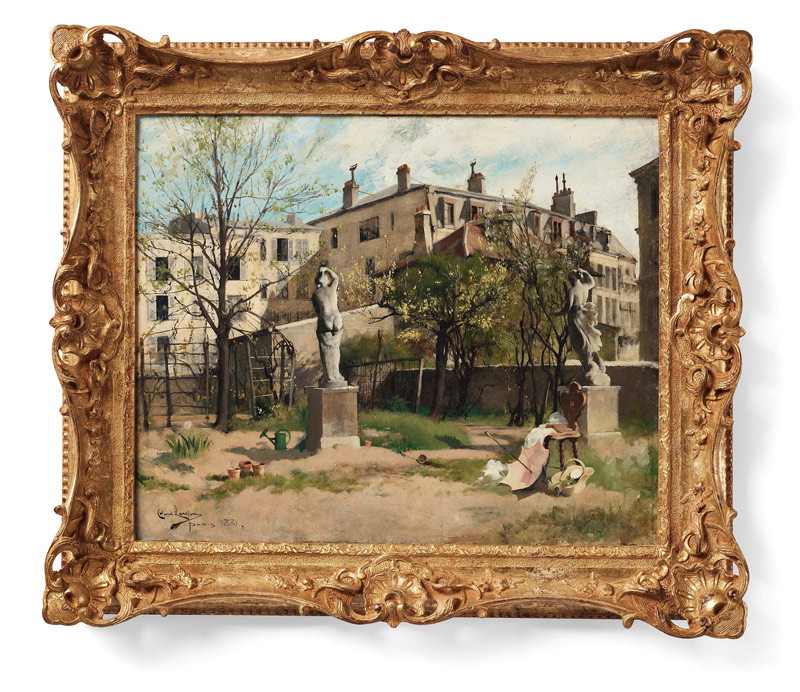
Carl Larsson's harsh and cold winter in the Parisian studio adds to the atmosphere surrounding "I lövsprickningen" as it becomes charged with personal meaning for the artist. Winter was finally behind him, and now he would enjoy the spring sun in the garden.
To be sold at the Important Winter Sale.
Estimate 5 000 000 - 6 000 000 SEK.
Viewing: December 1–6th, Berzelii Park, Stockholm.
Open: Mon–Fri 11 AM–18 PM, Sat–Sun 11 AM–16 PM.
Auction: December 7–9th, Arsenalsgatan 2, Stockholm.
To the work
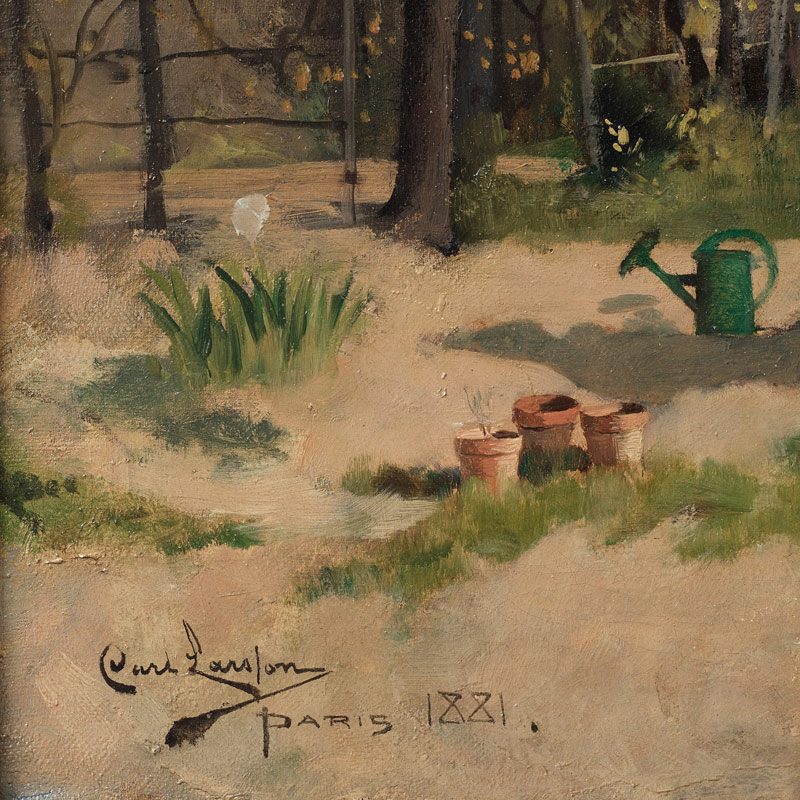
Carl Larsson, ”Bro över Loing”
In the winter of 1885, snow fell on the northern French village of Grez, which sat on the banks of the river Loing. Carl Larsson, who had been living in the village since 1882, seized the moment and used it in his art. For the few days that the snow stayed on the ground, he took the opportunity to portray the weather conditions in the village in a small number of paintings. Several were painted using watercolours, but for some, he chose thicker pastels in order to capture his impressions of the snow. One of these is ”Bro över Loing”.
The painting depicts a quiet scene taking place by the medieval bridge’s firmament. The afternoon sun appears to be setting, and a man is on his way across the bridge. In the centre of the image, Larsson has drawn a group of birds pecking the snow-covered ground next to the river. He here employs the pastel colours’ entire scope to create shimmering effects of light. He also used this subject for an etching entitled ”Snö i Grez” [Snow in Grez].
During the 1880s, the French village had become a place of pilgrimage for Swedish artists. In the Scandinavian artist colony (there were not just Swedes), Larsson was a central figure. Today the colony is legendary, not only because of its important role in Swedish art history but also for the community it created and the parties that happened there. Larsson arrived in the village in 1882 and stayed for three years. When he met Karin Bergöö, he returned to his home country ahead of their wedding in Stockholm.
The period in Grez was clearly important to his artistic practice. He wrote, "Now my eyes had been opened, the spell was broken. I looked for the first time at nature. I threw my bizarreries on the rubbish heap and my pretentious idea-combinations in the lake. And there they shall remain. Oh yes, I have fully embraced nature, and may it be as simple as it pleases. This living, breeding earth shall now be the subject of my painting”. The stay would later result in what is considered Larsson's first great period. He became a success at the ‘Salon’ and sold works to both the French government and important Swedish collectors, such as Pontus Fürstenberg from Gothenburg.

When one thinks of the art from Grez-sur-Loing one usually thinks of the flourishing depictions of spring with their strong colours, or the autumn scenes in shades of grey with farmers taking in the harvest. That this auction is instead offering one of Carl Larsson’s very rare winter scenes from the French village is highly exciting.
To be sold at the Important Winter Sale.
Estimate 600 000 - 800 000 SEK.
Viewing: December 1–6th, Berzelii Park, Stockholm.
Open: Mon–Fri 11 AM–18 PM, Sat–Sun 11 AM–16 PM.
Auction: December 7–9th, Arsenalsgatan 2, Stockholm.
To the work
See full catalogue
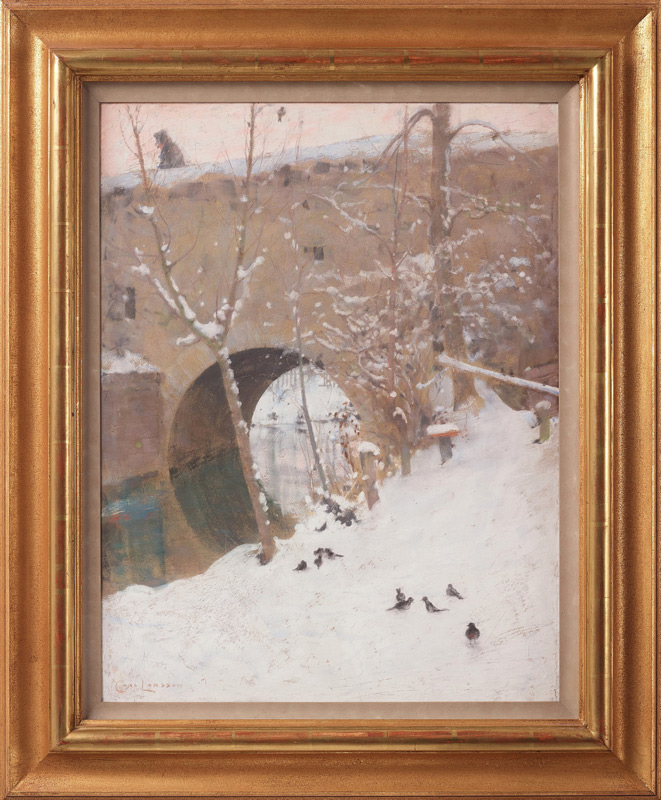
Carl Larsson, ”Marias kröning (detalj), kopia efter Fra Angelico”
Björn Fredlund describes Carl Larsson's stay in Paris in 1888 in the exhibition catalogue for Carl Larsson in the Gothenburg Art Museum, Gothenburg (2001):
”Filled with anticipation, Carl and Karin Larsson had set off for Paris in April 1888, leaving their children, Suzanne and Ulf, with Karin's parents in Hallsberg. Carl was delighted to be released from his teaching duties at Valand and to be able to devote himself undivided to a major task without having to worry about finances.
The triptych Carl Larsson was commissioned to do was for the staircase of the Fürstenberg Gallery. The artist and the patron had agreed that it should pay tribute to three great epochs in art history: the Renaissance, the Rococo and contemporary art. 'Renaissance' was to form the triptych's central image. To find inspiration for the painting, the artist visited the Louvre Museum. He followed the epoch's quest for symmetry and harmony in his composition. The picture's composition is reminiscent of altarpieces with Mary and the baby Jesus surrounded by saints.”
After his return from Paris in 1889, Carl Larsson sent two sketches to his friend Viktor Rydberg. The sketches were made at the Louvre when he was preparing the 'Renaissance'. Georg Nordensvan mentions the sketches in the SAK publication "Carl Larsson I", 1920:
”...one a group from 'The Coronation of Mary' by Fra Angelico, the other 'The Annunciation with Two Saints' by another 15th-century Italian painter, he did not know which, but thought it was particularly fine in colour.”
To be sold at the Important Winter Sale.
Estimate 150 000 - 200 000 SEK.
Viewing: December 1–6th, Berzelii Park, Stockholm.
Open: Mon–Fri 11 AM–18 PM, Sat–Sun 11 AM–16 PM.
Auction: December 7–9th, Arsenalsgatan 2, Stockholm.
To the work
See full catalogue
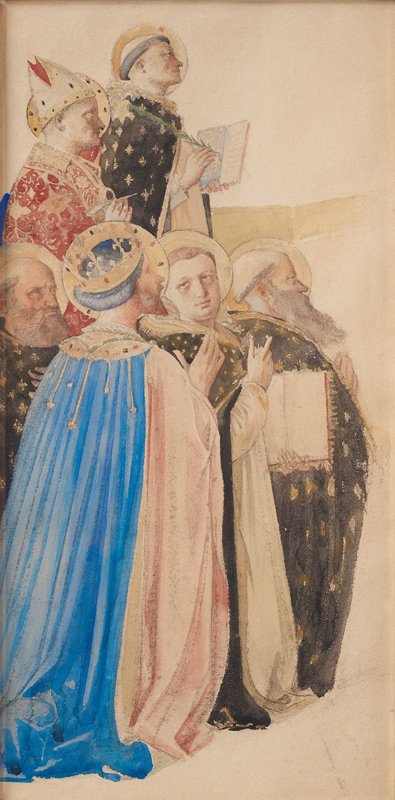
Carl Larsson, ”Solfjädrar”
Carl Larsson painted fans for an article about the fan by Ludvig Looström. The article was included in the book "Med brush och penna. A Yearbook of Swedish Art", published by Captain Warner Silfversparre in 1885. In addition to Carl Larsson, the book was illustrated by Anders Zorn, Bruno Liljefors and Jenny Nyström, among others. The elegant woman depicted is Anna Vilhelmina Silfversparre née Stahre. She married Silfversparre on October 8th, 1884.
To be sold at the Important Winter Sale.
Estimate 300 000 - 400 000 SEK.
Viewing: December 1–6th, Berzelii Park, Stockholm.
Open: Mon–Fri 11 AM–18 PM, Sat–Sun 11 AM–16 PM.
Auction: December 7–9th, Arsenalsgatan 2, Stockholm.
To the work
See full catalogue
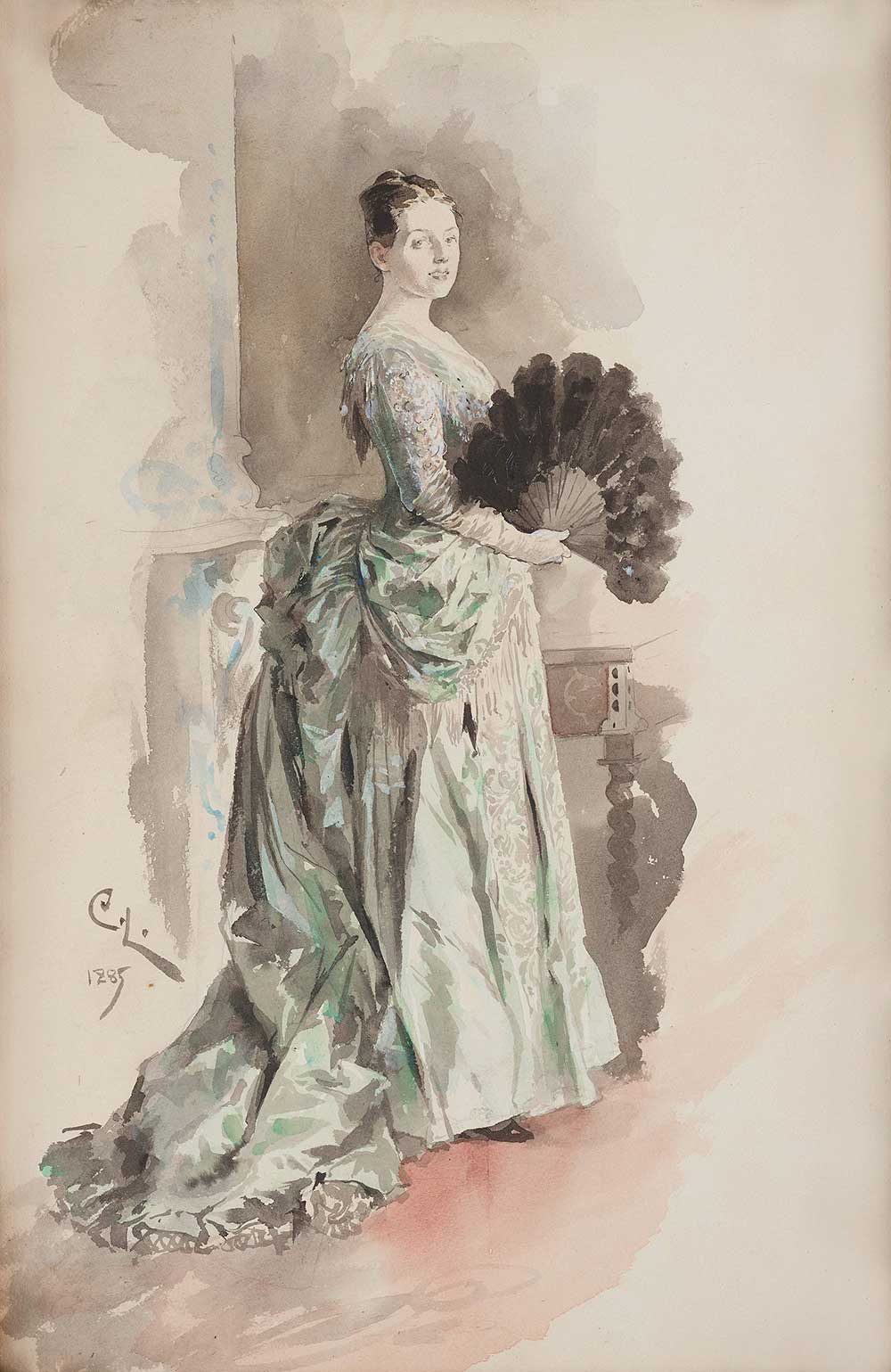
Requests & condition reports Contact specialist

Tukholma
Lena Rydén
Johtava taideasiantuntija, moderni- ja 1800-luvun taide
+46 (0)707 78 35 71

Tukholma
Johan Jinnerot
Asiantuntija taide ja vanhempi maalaustaide
+46 (0)739 400 801

Tukholma
Lisa Gartz
Johtava Asiantuntija Hopea ja Veistokset
+46 (0)709 17 99 93

Tukholma
Björn Extergren
Johtava asiantuntija sisäänjättö ja myynti. Asiantuntija antiikkikalusteet, taidekäsityö ja aasialainen keramiikka
+46 (0)706 40 28 61




























